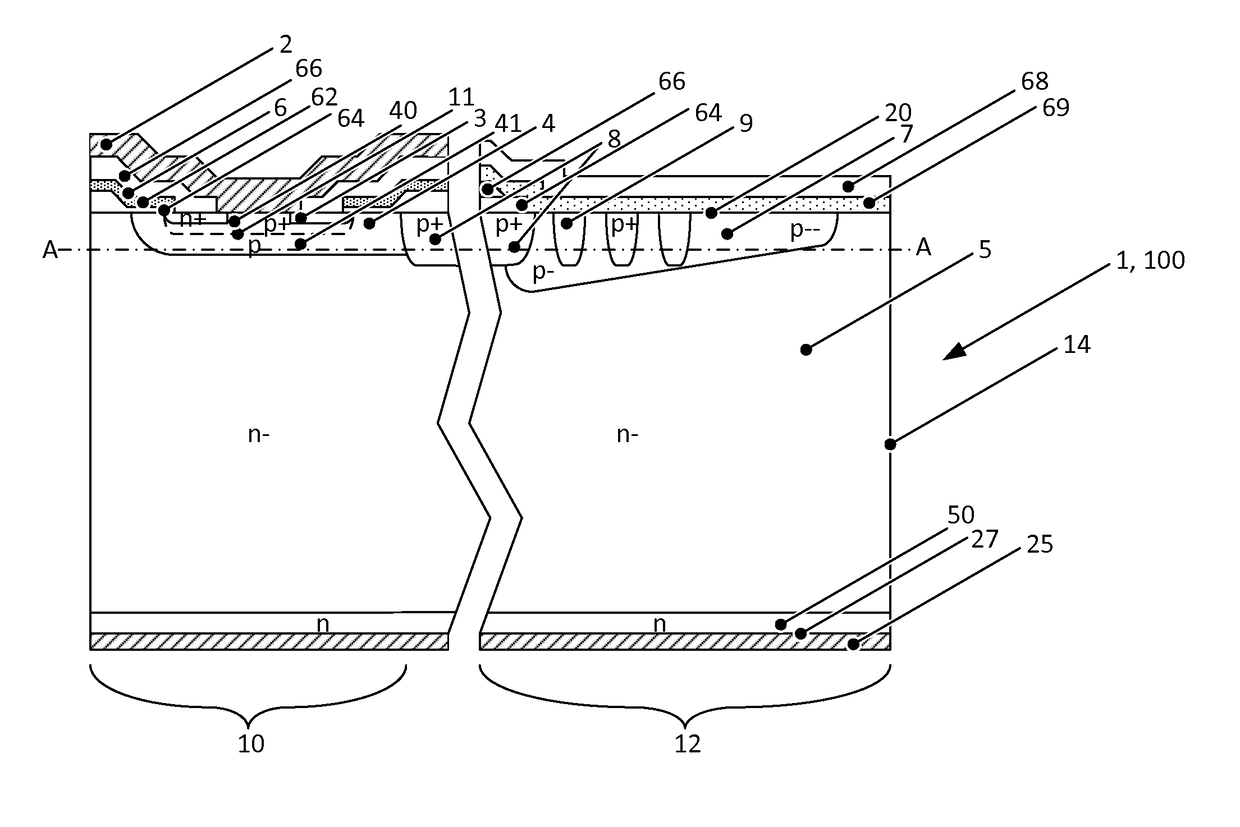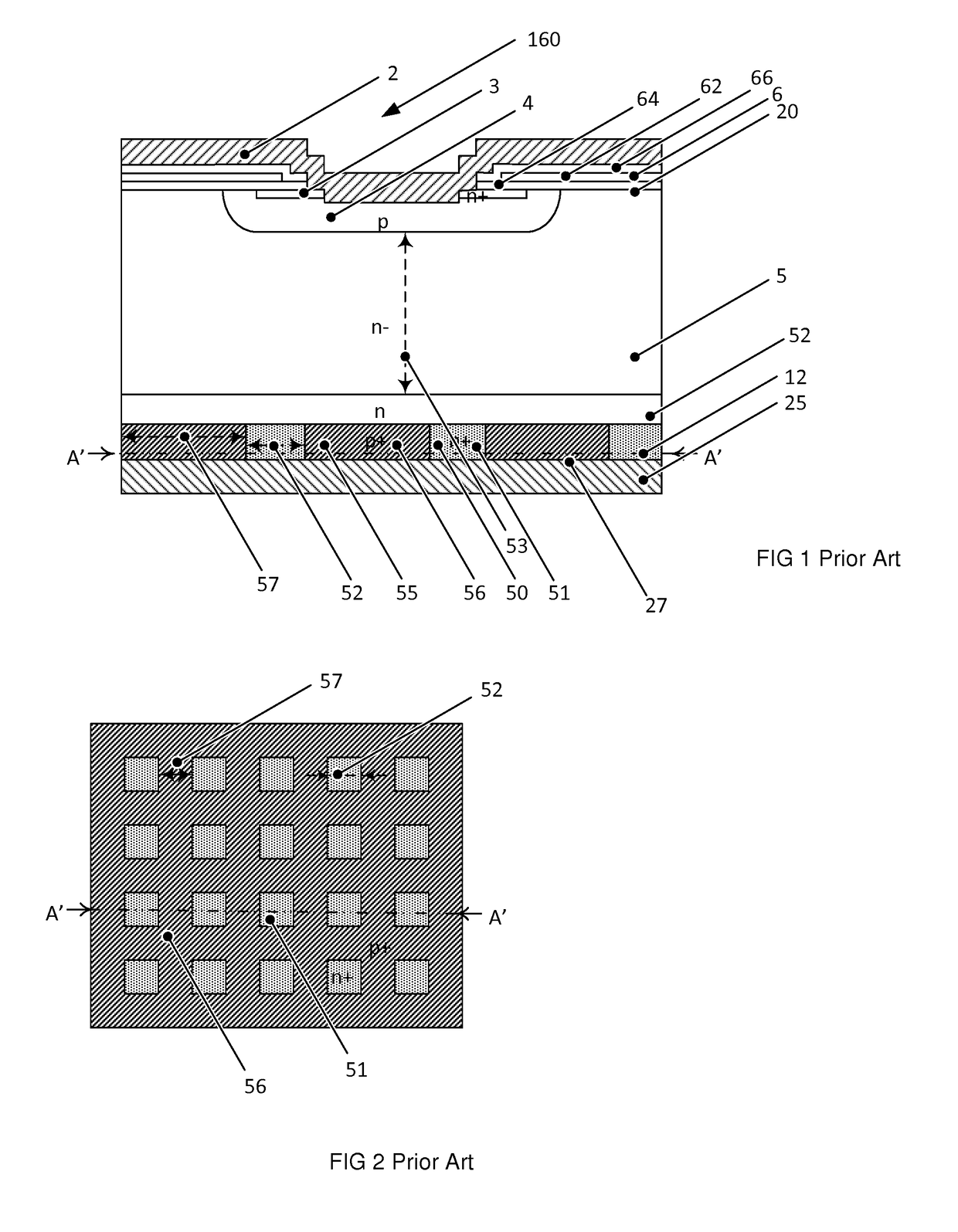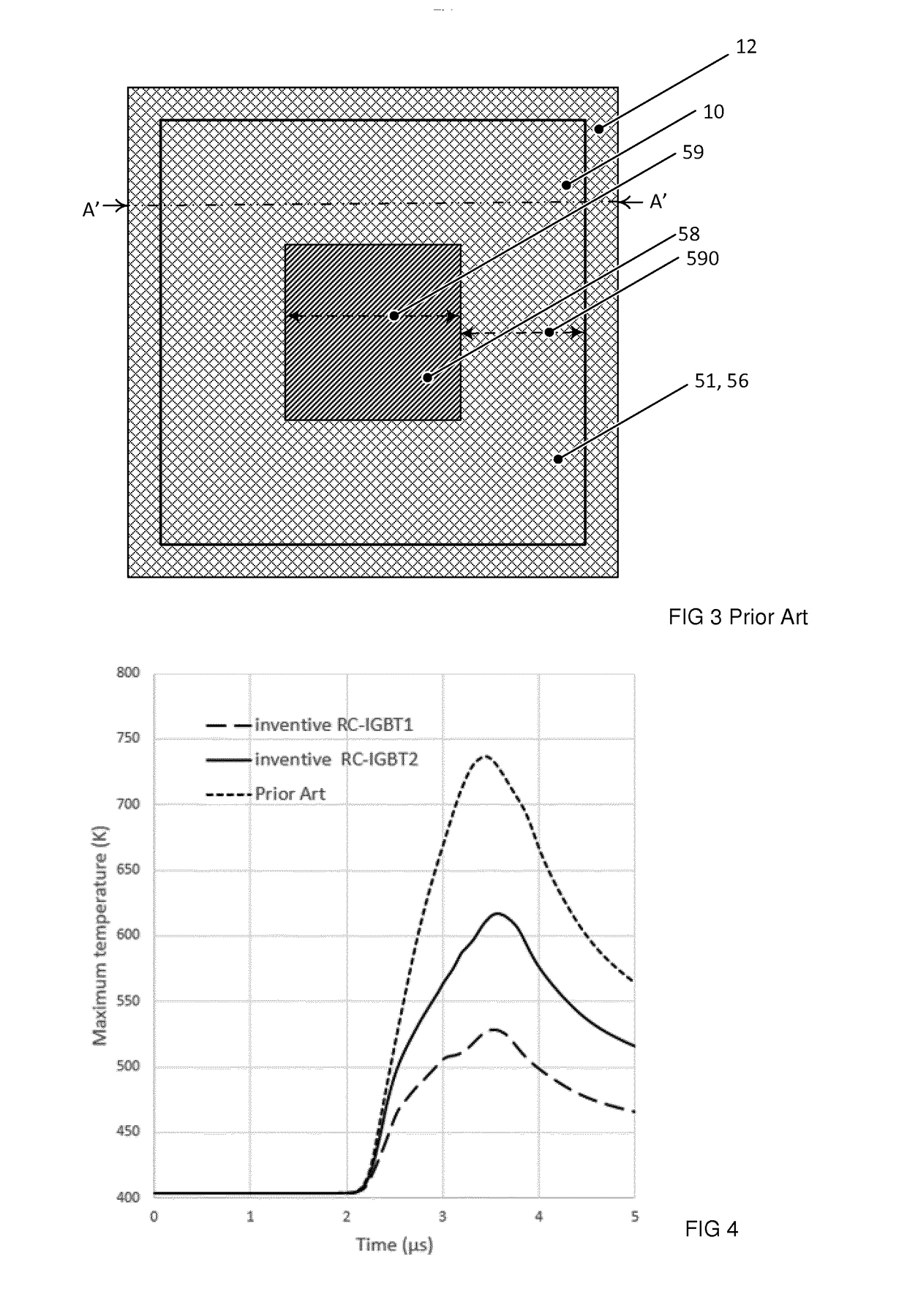Reverse-conducting semiconductor device
a reverse-conducting, semiconductor technology, applied in semiconductor devices, diodes, electrical devices, etc., can solve the problem of affecting the soa of the freewheeling diodes, and achieve the effect of improving the turn-off capability of the device in diode mod
- Summary
- Abstract
- Description
- Claims
- Application Information
AI Technical Summary
Benefits of technology
Problems solved by technology
Method used
Image
Examples
Embodiment Construction
[0055]In FIG. 5 a first embodiment of an inventive reverse-conducting (RC) MOS (metal oxide semiconductor) device 1 in form of a metal-oxide-semiconductor field-effect transistor (MOSFET) 100 is shown. The MOSFET 100 comprises a first main electrode 2, which is a source electrode for a MOSFET, on a first main side 20 and a second main electrode 25, which is a drain electrode for the MOSFET 100, on a second main side 27 opposite to the first main side 20. The device has an active cell region 10 (central region, which shall be a MOS cell region, i.e. such region, in which the MOS cells 11 are arranged) and a termination region 12 laterally surrounding the active cell region 10 up to an edge 14 of the device. The edge is arranged as the surface of the device between the first and second main side 20, 27 of the device. The first main side 20 shall be the surface of the doped layers on the side towards the first main electrode 2. It shall be a plain plane farthest away from the second ma...
PUM
 Login to View More
Login to View More Abstract
Description
Claims
Application Information
 Login to View More
Login to View More - R&D
- Intellectual Property
- Life Sciences
- Materials
- Tech Scout
- Unparalleled Data Quality
- Higher Quality Content
- 60% Fewer Hallucinations
Browse by: Latest US Patents, China's latest patents, Technical Efficacy Thesaurus, Application Domain, Technology Topic, Popular Technical Reports.
© 2025 PatSnap. All rights reserved.Legal|Privacy policy|Modern Slavery Act Transparency Statement|Sitemap|About US| Contact US: help@patsnap.com



